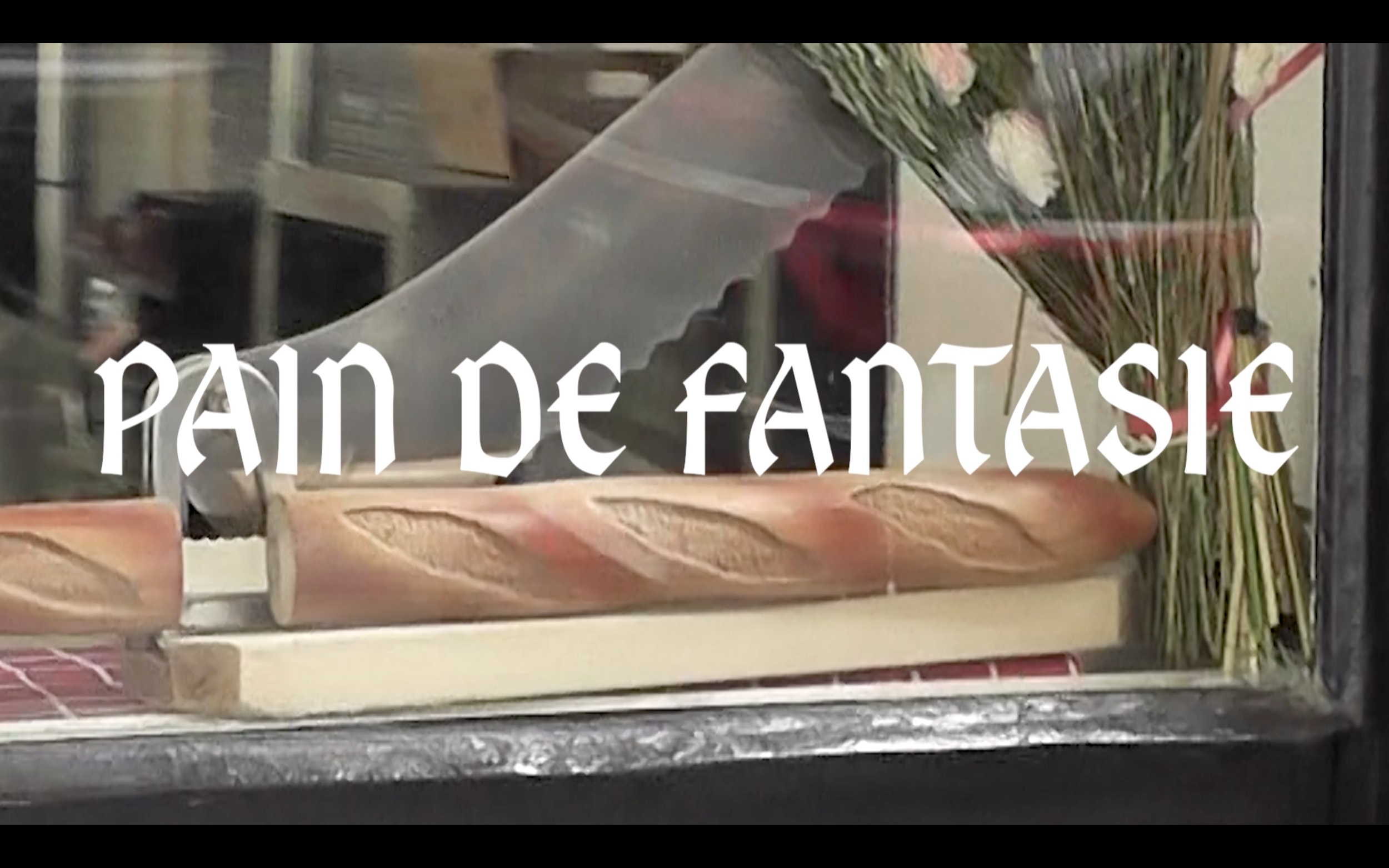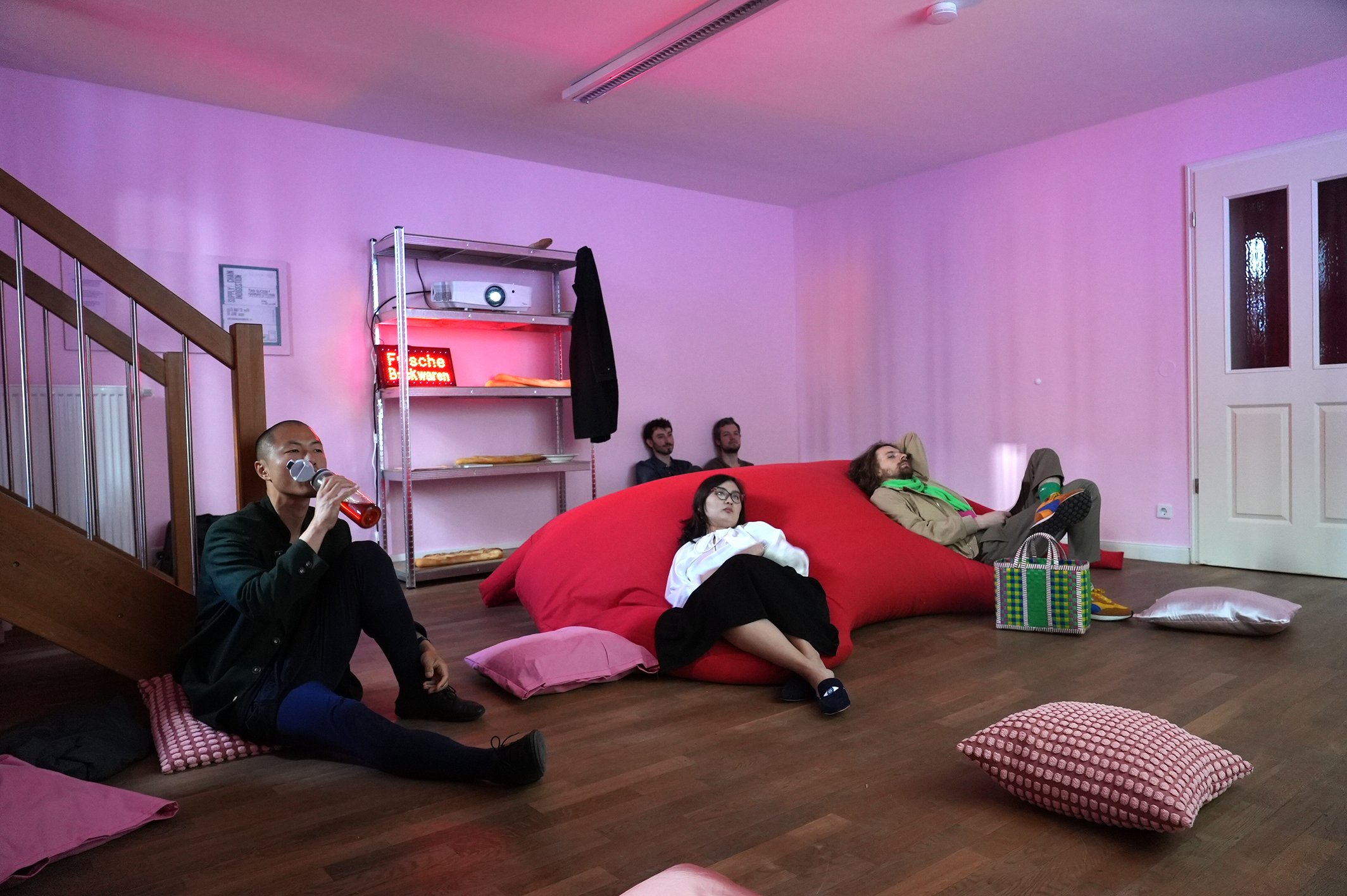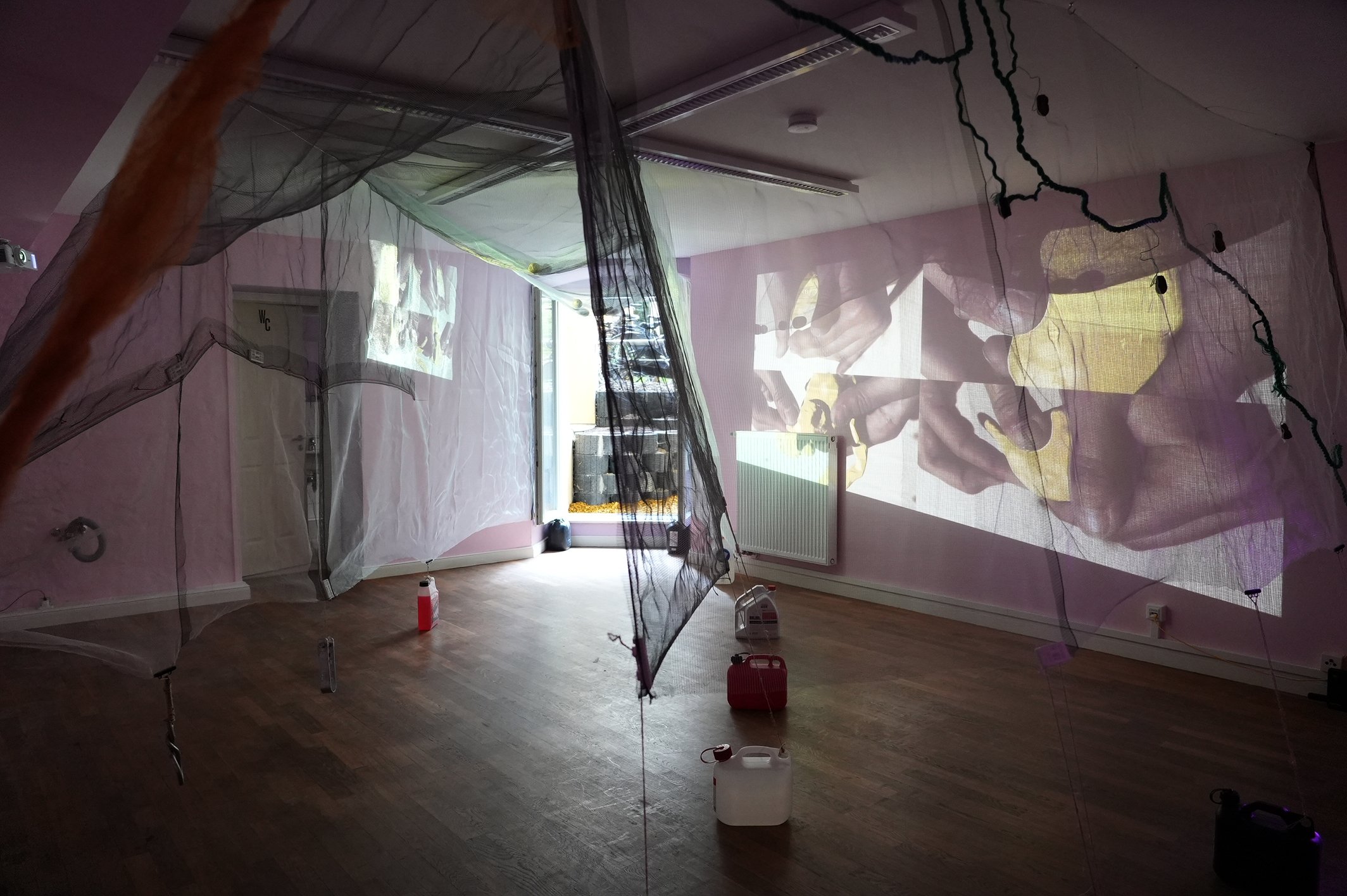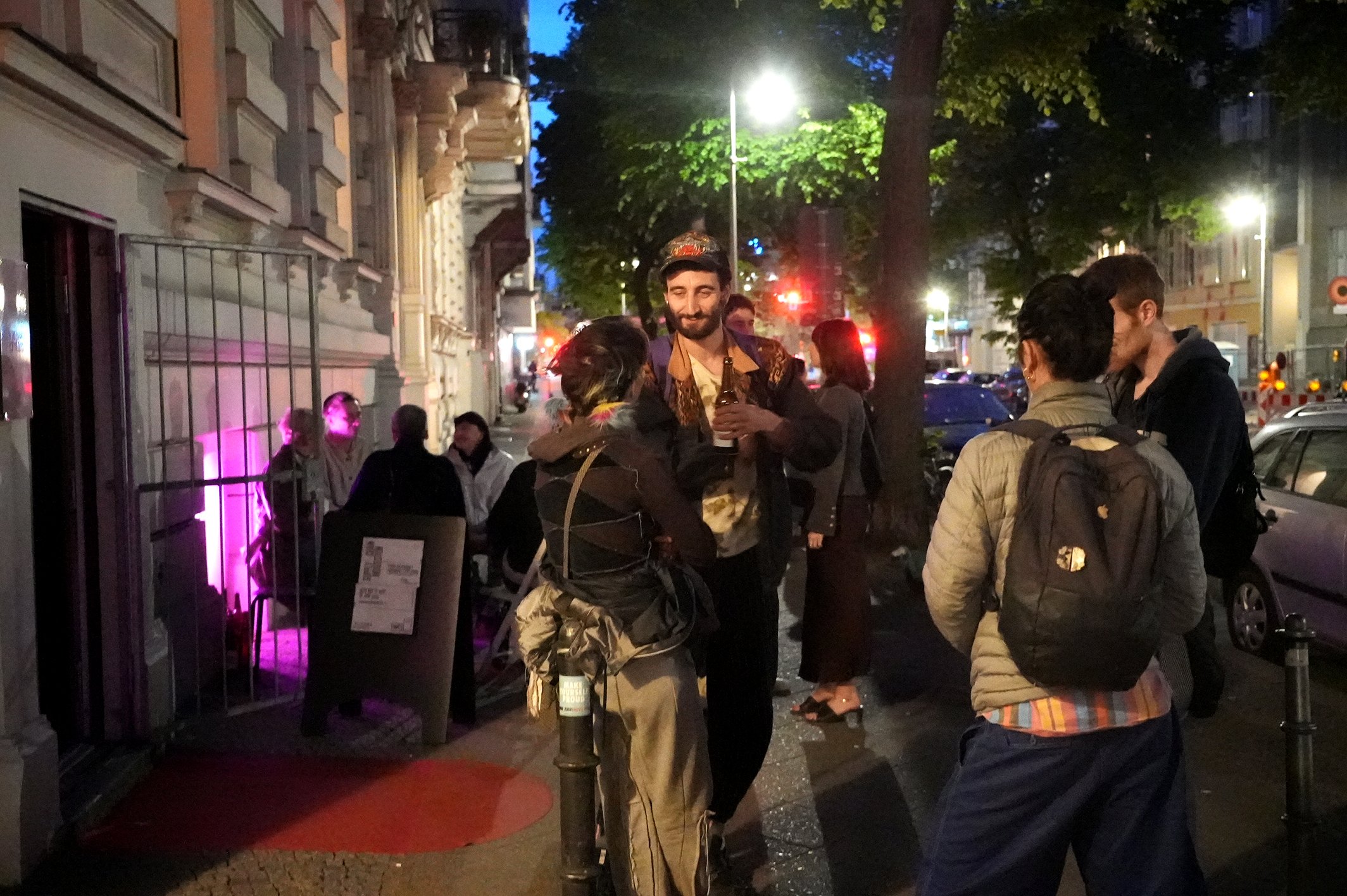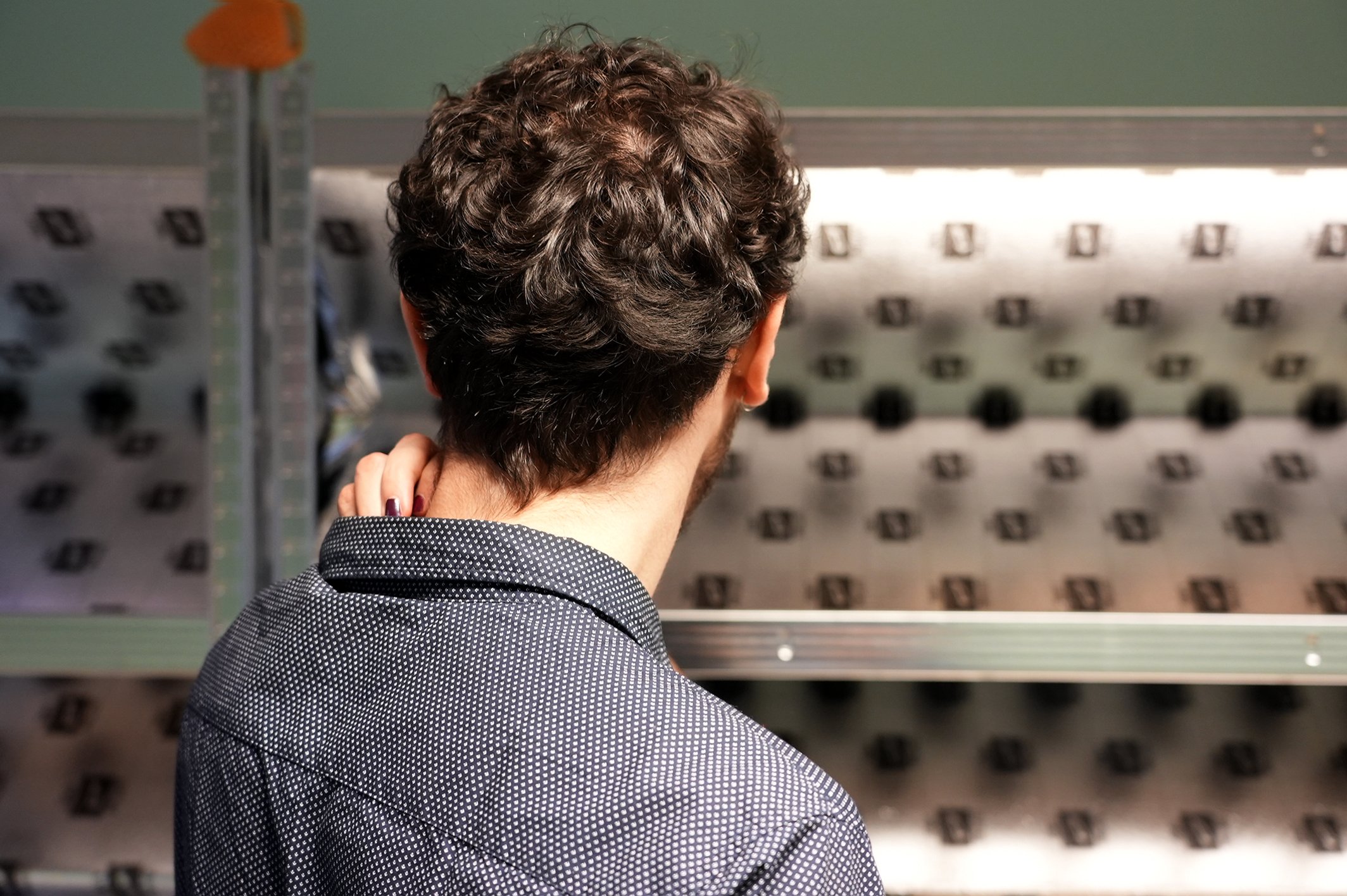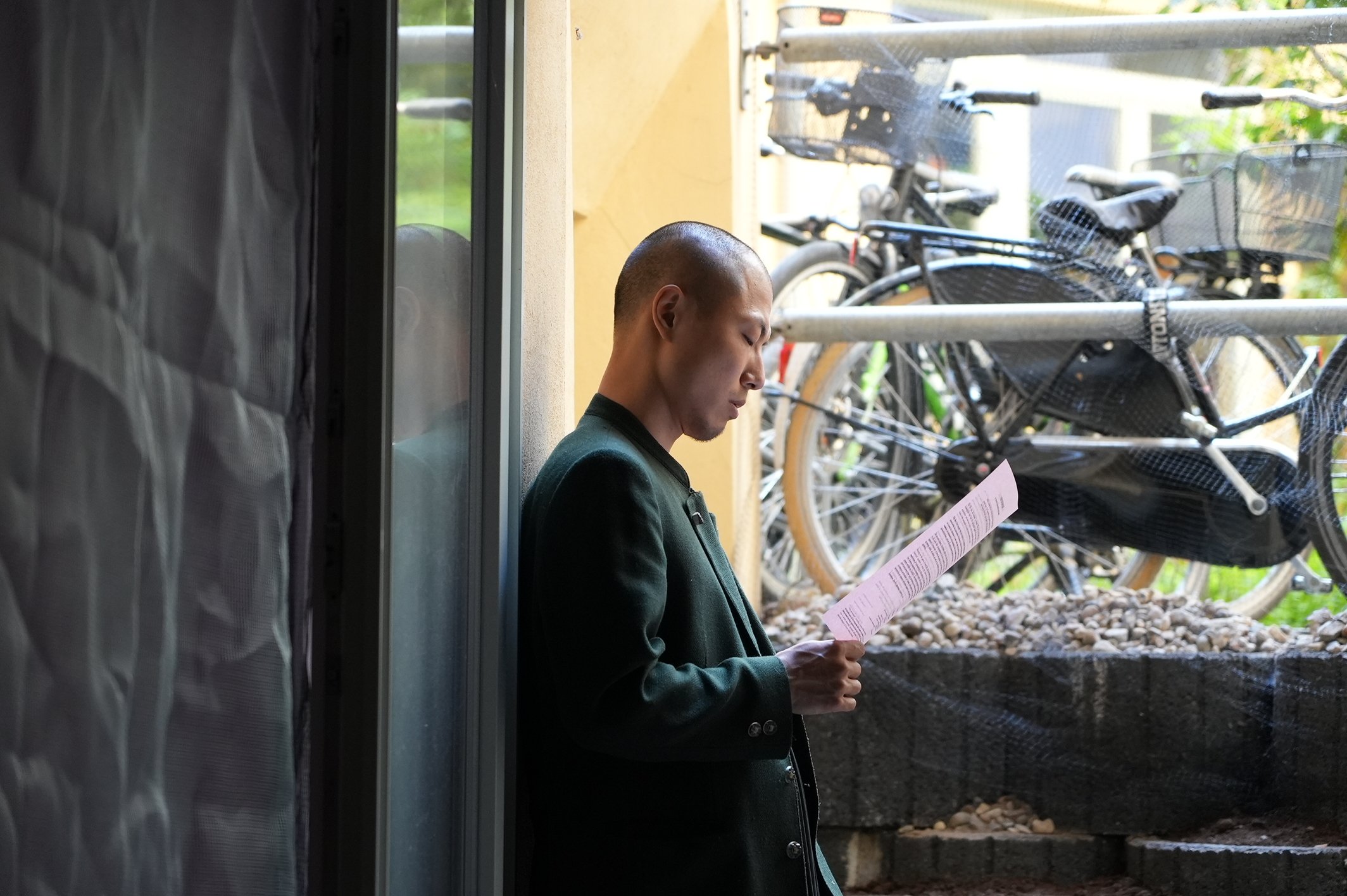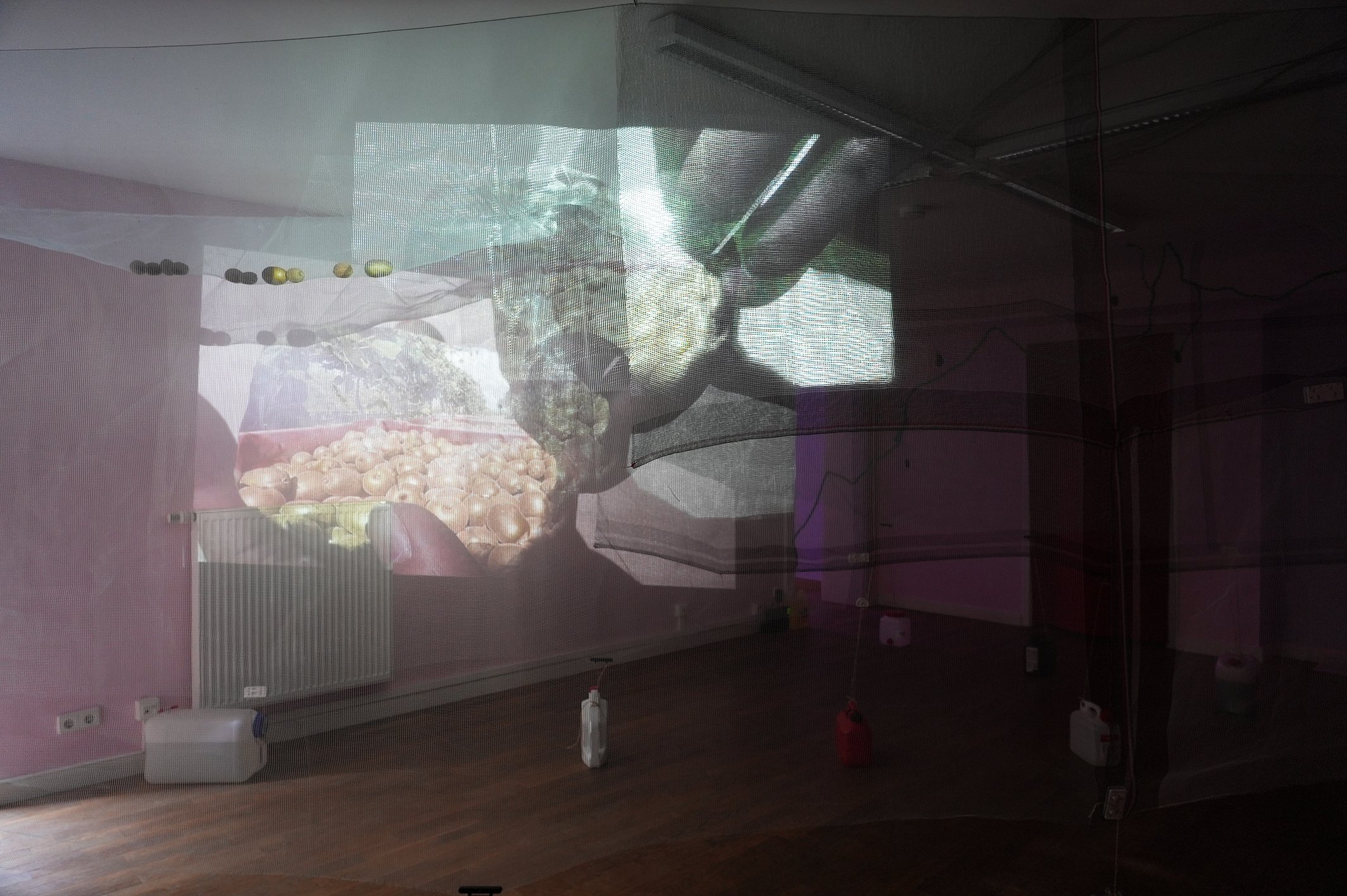SUPPLY CHAIN INDIGESTION
An exhibition by Tian Guoxin and Hannah O’Flynn with Kari Leigh Rosenfeld.Supply Chain Indigestion looks into the intersections between eating practices, food production, and power relations. The exhibition brings together the political histories of the kiwi fruit and the baguette, and investigates how these foods encapsulate the complex networks of globalised capitalism. The works by Tian Guoxin and Hannah O’Flynn with Kari Leigh Rosenfeld look at our constant entanglement in systems of exploitation, observing how the everyday objects that surround us have been made available through transoceanic commercial operations, long histories of colonisation and continuing environmental exploitation. They question the power dynamics behind this fruit having been taken from its habitual environment, globally circulated, and then returned to be sold back under a new identity. Or, how the charged symbolism given to bread has played an overlooked role in the destruction of cultures and environments.
The visitors enter the exhibition as if being swallowed into the digestive system that slowly breaks down the history of these food products. In the stomach, the relations held within these foodstuff, often hard to grasp due to the immense geographical distances that they travel, become more palpable. Half way below ground, somewhere between root and stem, the layers of meaning imprinted in the food we ingest begin to become more discernible, mapping out the supply chains of exploitation.
Thanks to: Pablo Giménez Arteaga, Mirco Carloni, Joannie Baumgärtner, Lucas Maximilian Frohn, Yve Oh, Jolyon Jones, Rayanne Mcirdi, Evan Maupin, Andy Forbes, Maria Ibáñez Trullén, Jingold S.P.A. and LPG Biomarkt GmbH.
Funded by Senatsverwaltung für Kultur und Europa and Bezirksamt Friederichshein-Kreuzberg.
Poster design by Socis Club.
20th May to 16th of June 2023
Opening: 6PM until late, 19th of May 2023
To come visit the exhibition, please contact us for an appointment:
info@withtherubbles.org / @withtherubblesofoldpalaces
with the rubbles of old palaces is currently not wheelchair accessible,
please contact our email address for online access to the exhibition’s films.
PAIN DE FANTASIE
by Hannah O’Flynn and Kari Leigh Rosenfeld
When a worker falls into a full silo, the grain can act like quicksand, sucking the
person down. The Cooperative is giving people the experience of being trapped,
and showing them how to get out safely. It’s called a grain engulfment simulator.
The film Pain de Fantasie*, by Hannah O’Flynn and Kari Leigh Rosenfeld, departs as an investigation into how the over-signified baguette has become entangled in histories of exploitation, and into how it plays a role in the propagandistic narratives of these histories. It thinks of the inescapably of colonial narratives, even down to a sandwich.
The film’s first chapter, Pan de la Doctrina, is an examination of the symbolism attributed to bread within the colonisation of the Americas. It looks at how the Spanish held within the object of bread the narration of a new racial order being constructed, searched in it to justify the violence of colonisation and exploitation, held it as an emblem of forced Christianisation, hid behind it its fears, and set off under its banner the destruction of entire ecosystems.
The second chapter, NuFrontier, rather looks at how bread, and particularly wheat, were used in US Cold War propaganda in its claims to superiority, as well as a “cure-it-all” in its fight against Communism. It traces the project of the Green Revolution and its promises to ever-growing yields of wheat, as well as the catastrophic social and ecological impacts it had globally.
Playing on the genre of essay film, Pain de Fantasie attempts to answer how one is to create a historical narrative in voices that disturb the (singular) voice of authority used within the mechanism of truth-making in the institution of “written history”. The role of the researcher and the director become (scheming) tropes, while a teenager becomes the expert by reading out a paper written by ChatGPT. The multiple propagandas get braided together, unclear where they start and where they end, becoming as confusing as researching the violences encoded into the numerous symbolisms of bread while eating it every day. A screen in a screen becomes the space for an always unfinished research, many questions left open.
Somehow, the film becomes a sandwich, too.
Research: Hannah O’Flynn
Camera and Editing: Kari Leigh Rosenfeld
Sound: Pablo Giménez Arteaga
Starring: Evan Maupin, Rayanne Mcirdi, Hannah O’Flynn and Kari Leigh Rosenfeld
Thanks to: Tian Guoxin, Pablo Giménez Arteaga, Iga Świeściak, Miiiel Ferraez,
Marc Norbert Hörler, Gerdard Elias Hernández (Socis Club), Rayanne Mcirdi, Evan
Maupin, Andy Forbes, Maria Ibáñez Trullén, Joannie Baumgärtner and Liu Chao
Funded by: Senatsverwaltung für Kultur und Europa and Bezirksamt Friederichshein-Kreuzberg
___________________________
*“Pain de fantasie”, according to some of the contradictory histories of French bread, was the category under which the predecessor of the baguette fell under. A sometimes up to two meter long bread, this forerunner was stored by being rested standing against a wall due to its length. The reason for its comical size was that making a bread larger than a certain expected standard allowed it to circumvent French laws limiting bread price, placing it within a separate category of luxury white breads.
Photos by Tian Guoxin & Wang Changpeng.
AKIN TASTE SERVED OVERSEAS
by Tian Guoxin
Nets for shading 20%; buckets; carpet; shelf; compressed carton cube; wood; metals; plastic ; HD 06’55’’ video.
Fine mesh may cast large shadows and thin vines may beget rampant growth from hidden roots in stony soil. With AKIN TASTE SERVED OVERSEAS, Tian Guoxin invites the viewer to follow an immersive pathway along the value chain of modern agriculture from farm to bin and from wild plant to designer crop. The installation makes use of an interlinked system of sceneries, tracing the agricultural history of 猕猴桃 (mí hóu táo), as well as the current conditions of its production.
At first viewers' movement is restricted by a mesh structure, which also serves as a translucent screen for a video projection showing labor-intensive processes behind the production of 猕猴桃 , exposing the hidden realities of its commodity fetishism. As the audio track on the video reveals to us, it is a fetish that is hiding an answer that is always concealed in names and language. In the next moment we find ourselves in a backyard lightwell, showcasing different terraced levels with gravel stone, soil, and root mulch, highlighting the origin of 猕猴桃 in the struggle to find light in the tangles of dense Chinese mountain forests. When farmed industrially on flat land, this story turns into one of retaining that struggle and shading it from the all too available sunlight - a contrasting Western perspective on cultivation as an act of retaining, protecting, and organizing light. The subsequent room then invites us via a doormat-advertisement, it also features heavy-load shelves with a cold metallic surface and a dominant monolithic cube made of pressed cardboard, remnant fruit boxes that have amassed from worthless vessels into fresh resource. The Market, it seems, is a game of desire, logistics, turning trash into treasure or wild monkey fruit into clean-eating superfood.
Feeding the viewer bits and bits of information along a metaphorical supply and logistics chain, Tian gives a taste of the multiple facets of Western (neo)colonial attitude. Without spelling it out, AKIN TASTE SERVED OVERSEAS offers a glimpse on the powers at play in the transformation of an uncultivated plant into a bred out commodity. Rather than making those powers all too explicit, Tian peels of these entangled layers and literally hangs them out there in the space to dry, gliding over tropes of originalism (the tendency of Western cultures to take ownership of ideas or products that originated in other parts of the world), orientalism (a perspective of Western culture that stereotypes and exoticizes ‘the East’), food speculation, labor migration, postcolonial identities and even christian missionarism.
Rather than an equation, the installation presents an equilibrium to us, rendering the unlikely outcome of a metabolic system of false relations rather than a unilateral direction of blame, showing us the deeply buried entanglements of a seemingly straight supply chain.
Text: by Joannie Baumgärtner
Film edting: Yve Oh
Sound: Pablo Giménez Arteaga
Starring: Jolyon Jones and Tian Guoxin
Project funded by Senatsverwaltung für Kultur und Europa, BPA//Berlin
program for artists, Neustart Kultur and Bezirksamt Friederichshein-Kreuzberg
Photos by Tian Guoxin & Wang Changpeng.
Photos by Wang Changpeng.




